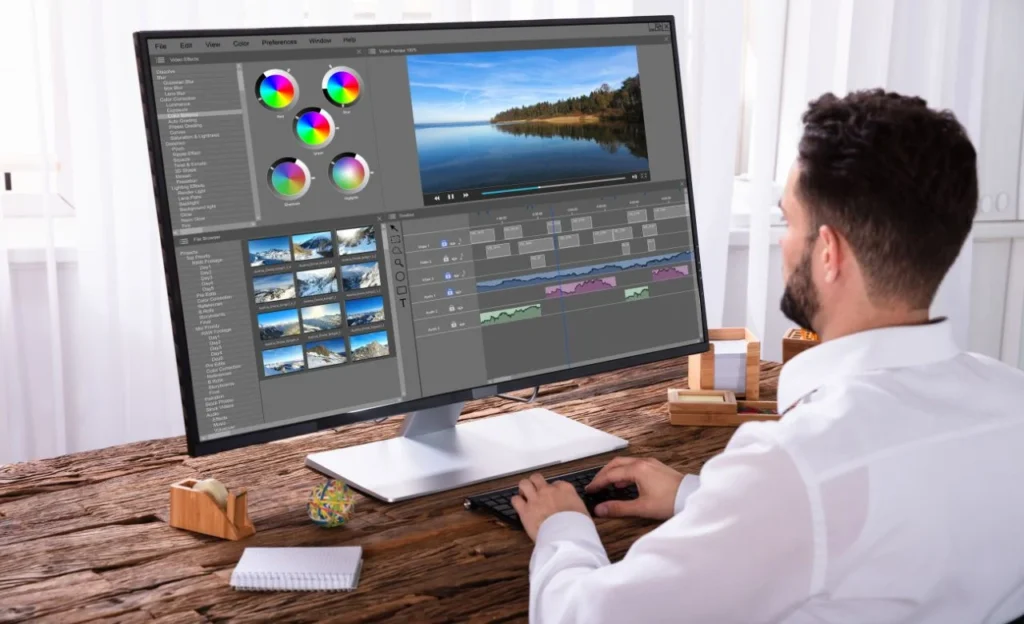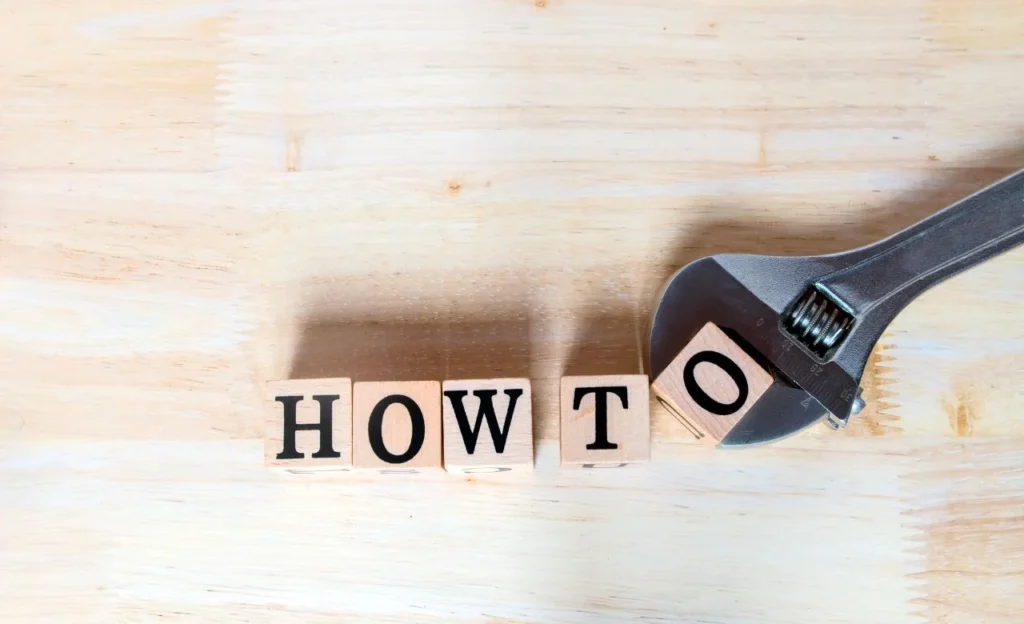In online content creation, transcripts have evolved from mere textual representations to indispensable assets for content creators on platforms like YouTube. So, how to generate transcript from youtube video? A transcript is a written version of the spoken words in a video, providing a comprehensive account of the content. Its significance transcends a mere companion; it is a gateway to enhanced accessibility, learning opportunities, and the ability to repurpose content for diverse needs.
How to Generate Transcript from YouTube Video | Assessing Your Needs
So, how to generate transcript from youtube video? The benefits of generating a transcript from a YouTube video are extensive. Improved SEO is a primary advantage, as search engines can index the text, making the content more discoverable. This, in turn, leads to a wider audience reach. Additionally, transcripts are valuable resources for personal reference, enabling creators and viewers to revisit specific sections, quotes, or information easily.
1. Video Characteristics:
Before embarking on the journey of generating a transcript, it’s crucial to assess the unique characteristics of the video. Analyzing audio quality ensures that the transcription method chosen can accurately capture spoken words.
Factors like speaker clarity, background noise, and language complexity influence the selection of the most appropriate transcription method. Understanding these characteristics guides creators in choosing a method that aligns with the nuances of their content.
2. Purpose of the Transcript:
Determining the purpose of the transcript is a key step in the assessment process. Different scenarios might require varied types of transcripts. For example, closed captions enhance accessibility, subtitles cater to a global audience, full-written transcripts provide detailed information, and specific sections may be needed for quick reference. Clarifying the intended use ensures that the chosen transcription method aligns with the desired outcome.
3. Budget and Time Constraints:
Practical considerations such as budget and time constraints are pivotal in choosing the right transcription method. Automatic services may offer a cost-effective and swift solution, but creators must weigh this against potential accuracy issues.
Human transcription services ensure accuracy but might come with higher costs. DIY transcription, though budget-friendly, demands time and effort. Assessing budget constraints and the urgency of transcription helps creators make informed decisions.

Now, Exploring Your Options
Understanding the different types of transcripts is foundational. Closed captions offer synchronized text for the audio, aiding those with hearing impairments and contributing to a more inclusive viewing experience.
Subtitles go a step further by providing translations in different languages, breaking language barriers, and broadening the audience globally. Full written transcripts encompass the entire spoken content, serving as a detailed textual companion to the video.
1. Automatic Transcription Services:
Automatic transcription services leverage advanced algorithms to convert audio into text swiftly. Popular options like Transcriptal, Otter.ai, Rev, and TranscribeMe provide convenient solutions.
Assessing these services involves considering their accuracy, turnaround time, pricing structure, and language support. While automatic services offer speed and efficiency, creators should be aware of potential drawbacks such as accent errors, technical jargon, and complex sentence structures.
2. Human Transcription Services:
Professional transcribers bring the expertise and nuance that automated services may lack. Accuracy, especially in challenging audio scenarios, is a key advantage of human transcription services.
Exploring reputable services involves considering their advantages, pricing models, and turnaround times. Additionally, creators might opt for specialized services tailored to legal, medical, or educational content, ensuring that the transcription meets specific industry requirements.
3. DIY Transcription:
For creators on a budget or dealing with relatively simple videos, the do-it-yourself (DIY) approach to transcription is an option. Manual transcription involves listening to the video and transcribing the spoken words.
Tools like Express Scribe or features like Transcriptal’s live transcription can aid this process. However, creators should be cautious about the time commitment and potential errors associated with manual transcription. While it offers budget-friendly flexibility, it may not be suitable for longer or more complex content.

How to Generate Transcript from YouTube Video | Generating Your Transcript
How to generate transcript from youtube video? Providing a glossary of specific terms helps enhance transcription accuracy, especially for content involving technical language or industry-specific terminology.
Step 01: Preparing Your Video
Optimizing the video before transcription is a proactive step. Clear audio is essential, so creators should consider measures such as noise reduction and adjusting background music levels. Identifying different speakers is crucial for multi-participant content, and this can be facilitated through speaker labels and timestamps.
Step 02: Using Automatic Services
Utilizing automatic transcription services involves choosing a service that aligns with your needs and uploading the video file. Once the automatic transcript is generated, it requires a thorough review. Creators should be prepared to edit any errors, ensuring the final transcript accurately reflects the spoken content. Timestamps and speaker labels these services provide can be leveraged to streamline the editing process.
Step 03: Working with Human Transcribers
When opting for human transcription services, creators choose a service based on specific requirements and provide detailed instructions regarding format, speaker identification, and timestamps. The initial draft is then reviewed thoroughly, and feedback is provided for any necessary revisions. Utilizing revision rounds ensures that the final transcript meets the creator’s accuracy and content representation expectations.
Step 04: DIY Transcription
For those choosing the DIY route, using transcription software with features like foot pedal control and adjustable playback speed is beneficial. Focus on accuracy and clarity during transcription, taking breaks to avoid fatigue and errors. Timestamps and speaker labels can be incorporated manually to organize the transcript effectively.
How to Optimize Your Transcript?
Ensuring the accuracy of the transcript is a critical step. Factual errors, typos, or misinterpretations can impact the overall quality of the content. Rigorous proofreading, potentially involving multiple rounds of review, is essential to maintain the integrity of the information presented in the transcript.
1. Readability and Formatting:
Beyond accuracy, the readability of the transcript contributes to the overall viewer experience. Proper grammar, punctuation, and sentence structure ensure the information flows seamlessly. A well-structured transcript enhances comprehension and makes it easier for viewers to engage with the content.
2. Accessibility Considerations:
Creating an inclusive transcript involves accessibility considerations. Inclusive language and formatting options, such as bold or italics, cater to visually impaired viewers who may be using screen readers. This step ensures that the transcript provides an accessible and meaningful experience for a diverse audience.
3. Timestamps and Speaker Labels:
Incorporating timestamps within the transcript allows for easy navigation, enabling viewers to jump to specific video sections. Clear speaker labels, especially in multi-participant videos, enhance the overall organization of the content. These elements contribute to a user-friendly transcript that enhances the overall user experience.

What Are The Advanced Tricks to Generate Transcript?
Once you have meticulously crafted a polished transcript, the next step involves making the most of this textual treasure. Exporting the transcript in various formats, such as TXT, Word, or PDF, expands its utility beyond the confines of the video platform. This versatility serves as a reference for viewers and opens avenues for collaborative efforts and further content creation.
1. Facilitating Collaboration:
Sharing the transcript allows collaborators, team members, or contributors to engage with the content more effectively. The ability to export the transcript in different formats caters to individual preferences and workflow requirements.
For instance, a Word document might be ideal for detailed editing, while a TXT file suits those who prefer a straightforward text format. This collaborative aspect transforms the transcript from a singular resource to a collaborative tool, fostering effective communication and content refinement.
2. Resource for Content Creation:
Viewing the transcript as a foundational resource unlocks the potential for creating additional content. Creators can extract key insights, quotes, or concepts from the transcript to develop blog posts, articles, or study guides.
This repurposing extends the original video content’s lifespan and provides a fresh perspective for the audience. By translating the spoken word into written form, creators tap into diverse mediums, catering to varied audience preferences.
3. Enhancing Accessibility:
The exported transcript is a stand-alone text that can be easily shared across different platforms. This accessibility is particularly valuable for individuals who may prefer reading over watching videos or those who encounter barriers to accessing visual content. The transcript becomes a document that can be distributed widely, reaching audiences beyond the confines of the original video platform. Hope so, Do you know now how to generate transcript from youtube video?
Repurposing Your Transcript: Transforming Words into Diverse Content
Transcripts, rich in information and insights, offer a wealth of opportunities for content repurposing. By transforming the spoken word into various formats, creators can extend the reach of their content and deliver value in diverse ways.
1. Blog Posts and Articles:
A well-crafted transcript can be a goldmine for blog posts and articles. Creators can identify key points, anecdotes, or valuable insights from the transcript to form the basis of written content.
This caters to audiences who prefer consuming information through reading and enhances the discoverability of the content on search engines. Search algorithms index text, and repurposing a transcript into blog posts can improve SEO and increase visibility.
2. Study Guides and Educational Resources:
For educational content or videos with in-depth information, transcripts can be repurposed into study guides or educational resources. Creators can organize the information in a structured manner, incorporating additional explanations or context where needed. This repurposing enhances the educational value of the content, providing audiences with supplementary materials for deeper understanding and engagement.
3. Social Media Snippets:
In the age of social media, bite-sized content is king. Transcripts can be mined for impactful quotes, intriguing snippets, or key takeaways tailor-made for sharing on platforms like Twitter, Instagram, or LinkedIn.
These snippets serve as teasers, enticing viewers to engage with the full video content. By repurposing content in this manner, creators amplify their social media presence and draw attention to the core message of their videos.

Utilizing Transcripts for SEO: Elevating Discoverability with Strategic Keywords
Beyond their role as textual companions, transcripts emerge as strategic assets for optimizing content discoverability on search engines. By integrating relevant keywords seamlessly, creators enhance the chances of their YouTube videos appearing in search engine results, attracting a broader audience.
1. Strategic Keyword Integration:
Transcripts serve as a textual representation of the video’s spoken content. Creators can strategically incorporate relevant keywords related to the video’s topic, industry, or target audience.
This keyword integration aligns the transcript with SEO best practices, signaling to search engines the content’s relevance to specific queries. As search algorithms evolve, transcripts become instrumental in ensuring that videos are surfaced to audiences actively seeking related information.
2. Enhanced Metadata:
In the realm of SEO, metadata plays a crucial role. When utilized strategically, transcripts contribute to the metadata associated with the video. Search engines scan this metadata to understand the content’s context and relevance.
A well-optimized transcript not only aids in the discoverability of the video but also provides additional context for search algorithms, potentially improving the video’s ranking in search results.
3. Improved Video Ranking:
As search engines prioritize content that aligns with user intent, transcripts are vital in enhancing video ranking. By integrating keywords naturally into the transcript, creators increase the likelihood of their videos being surfaced for relevant searches. This proactive approach to SEO sets the stage for a broader audience reach and increased visibility in the competitive landscape of online content.
Advanced Features: Exploring the Frontiers of Transcription Technology
As technology evolves, transcription services offer advanced features beyond the basic conversion of audio to text. Exploring these features allows creators to leverage cutting-edge tools for an enhanced transcription experience.
1. Automatic Punctuation:
Some transcription services now offer automatic punctuation, adding a layer of sophistication to the transcript. This feature not only saves time during the editing process but also contributes to the text’s overall readability. Creators can benefit from cleaner, more polished transcripts, reducing the need for manual punctuation adjustments.
2. Speaker Diarization:
For videos featuring multiple speakers, speaker diarization is a game-changer. This advanced feature distinguishes between different speakers, providing clarity and organization within the transcript. Creators can easily identify who is speaking at any given time, streamlining the editing process and ensuring accurate representation of dialogue.
3. Foreign Language Translation Services:
Some transcription services offer foreign language translation features for creators aiming to reach a global audience. This functionality enables the translation of transcripts into different languages, broadening the video’s accessibility. Creators can cater to non-native speakers, unlocking new audience segments and expanding the global reach of their content.
In embracing these advanced features, creators position themselves at the forefront of transcription technology, capitalizing on tools that save time and elevate the overall quality and usability of transcripts.
Conclusion
In conclusion, generating a transcript from a YouTube video is a multifaceted journey involving careful assessment, exploring options, and optimizing the resulting transcript. Far from being a mundane necessity, transcripts emerge as strategic tools for content creators, offering benefits in accessibility, learning, and content repurposing.
By navigating the diverse transcription landscape and leveraging the resulting transcript effectively, creators can amplify the impact of their YouTube content, reaching a wider audience and enhancing the overall viewing experience. So, now you know how to generate transcript from youtube video?


